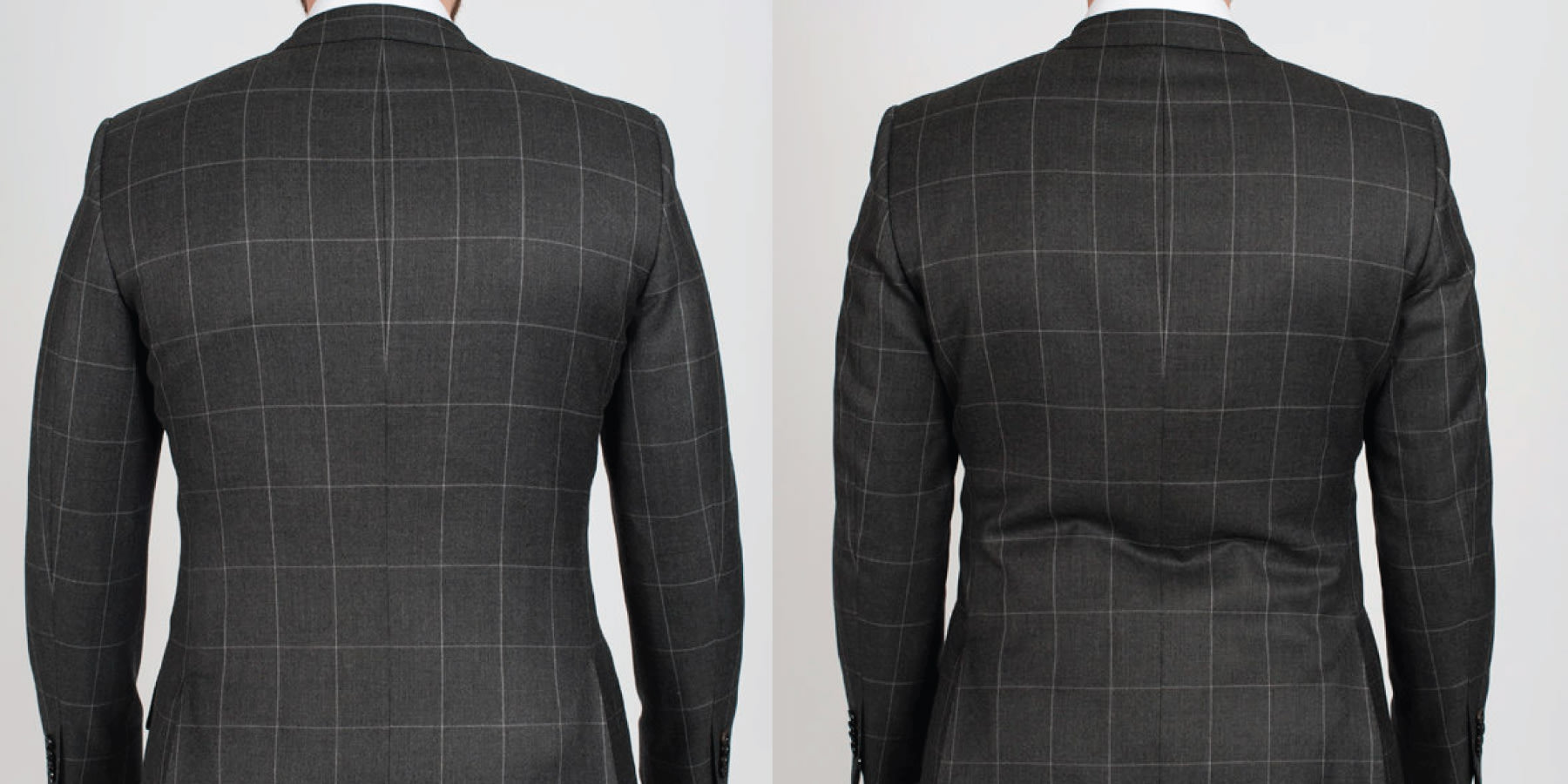“It doesn’t fit me right” is the main reason people throw out their clothes and buy new ones.
This is not only frustrating, it’s also a waste of time and money, and it’s bad for the environment.
I get it, nobody wants to wear a garment that doesn’t look right, is uncomfortable, or makes them feel self conscious. The thing is, a lot of “fit problems” can be fixed by your local tailor, for a relatively small expense.
So we put together the “Garment Doctor” series to highlight specific fit issues, why they happen and how to fix them, with the goal of saving you time and money and helping you live a more sustainable lifestyle.
In this edition, we’re taking a look at a fit problem I like to call Low Back “Bunching”.
A well tailored jacket should be smooth across the back, gently following the lines and contour of the body. The slimmer the jacket, the more important the contour (since there is less room for free-falling “drape”). Personally, I prefer the back of my jackets very trim, with minimal excess fabric, so I take my tailoring very seriously.
A tricky place to fit is the curvature of the spine at the lower back, especially if your an athlete (or ex-athlete) with a large seat (since the angle from low back to high glutes is sharper).
Here’s an example of how a jacket should fit through the back (in my opinion/preference). Notice the clean lines and minimal wrinkling in the fabric here:
Now move to the picture below.
The lower back “crunching” shown here is a problem that I see often with off-the-rack suits, and sometimes made-to-measure suits.
WHAT'S CAUSING THIS?
The wrinkle crashing here is caused by the proportions and curvature of the back panels. Basically the top half of the back panel (or “back strap”) is too long in proportion to the bottom half of the back panel. This causes the bottom of the jacket to get hung up on the hips and glutes, which causes a “pooling” of fabric just above the seat.
In other words, the “scoop” of the lower back is landing too low.
CAN IT BE FIXED?
Depends. This one is sort of on a case-by-case basis, and should be avoided.
Basically to correct this you have to completely remove the back panels (which means removing the collar, both sleeves, and both side-body panels). Then, the tailor basically has to shrink-down the back panels from the top (cutting the neckhole lower, reshaping the armholes lower, etc.). Then the back panels are lengthened from the bottom to accommodate for the relative downward positioning of the other pattern pieces.
As you may know, there are quite a few variables involved with a job like this, which is why it’s handled on a case-by-case basis. There has to be enough seam allowance around the back panels to re-cut their shape (including the armholes) and there has to be enough fabric at the bottom to lengthen the hem, and resew the vents. Most importantly, your tailor really has to know what he’s doing – this is major surgery and other complications could arise.
Knowledge is power. Now go get tailored.
Thanks, as always, for reading.
Yours in style,
Dan Trepanier

